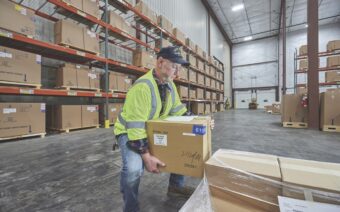September 7, 2022
Even through our Zoom connection, I could see that Tony was confused.
“I started to complete the online assessment you asked me to do, but I am stuck,” he said. “Should I fill it out as work-Tony or home-Tony?”
Assessments and profiles are useful instruments that executive coaches, like my colleagues and I, sometimes employ with our clients. Tony’s question is not uncommon. (The answer, by the way, is to complete the assessment with a “regardless of the circumstance” mindset).
Upon further discussion, coaching clients like Tony will usually explain they behave quite differently at home and at work. These conversations often provide meaningful insight about possible barriers to a client’s workplace authenticity, including real or perceived behavioral expectations at work.
As organizations ramped up remote work options over the last couple of years, I continually reflected upon the idea of people attempting to integrate their home lives and their work lives, especially for those individuals who view their work selves (work-Tony) as notably different than their home selves (home-Tony).
How were those individuals managing the collision of their home and work lives?
More specifically, how were those individuals attempting to achieve workplace authenticity at home?
By now, the stories of remote employees heroically attempting to manage children, homeschooling, isolation and illness are familiar to all of us, either because we experienced it ourselves or because we supported friends and family members as they lived through it.
While those challenges to remote work were (and, for some, still are) difficult, to say the least, there was also the quiet stress – almost imperceptible amid all of the chaos and noise – of figuring out what authenticity meant for each of us as we sat down to work in front of video cameras in our homes.
We wondered what other people’s home offices would look like on video.
We were curious – nosy, even. We wondered what a peek into our customers’ and coworkers’ homes would tell us about them. But, then we began to speculate: What would they think of my home work space?
Would they think less of me because I don’t have a home office?
Would they notice I would be chiming in from my dining room, spare room, basement, closet, or any-room-with-a-door-to-keep-the-kids-and-pets-out?
Why have I never decorated even a single wall in my home?
From time to time, we got to see how our customers and coworkers dealt with novel workplace interruptions, such as unruly children, oblivious partners, needy pets, faulty home connections, and other homelife demands.
Were they as composed with their partners or children as they were with us at work? What did it mean if they didn’t seem as patient with their family members as they were with us? Did they love us more than their family members or was the whole cool, calm and collected teammate thing just a façade?
Conversely, we sometimes had to deal with those novel workplace interruptions ourselves. For a split second, we had to consider our audience while our brains moved through a foreign decision-tree at lightning pace: Couldn’t my partner/child/pet have waited just 10 more minutes until this virtual meeting was over?
If no (as evidenced by the not-so-quiet-whisper of your partner, scream of your child and/or zoomies of your puppy), then reason.
Can I reason with my partner/child/pet with the composure that my coworkers are used to seeing from me? If no, then humor. Can I add some levity to this untimely and unnecessary distraction from my serious work discussion? If not, then escape. I need to excuse myself… and now they know that my home life is not as pulled together as I like them to think my work life is. Sigh.
In “Is This a Lousy Job or Is It Me?” I explain moving toward the stage of authenticity at work “is a time when an awakening occurs as we’re taking time to get to know ourselves, and we become willing to bring our real selves to work.”
Remote work arrangements over the last two-plus years insisted that we brought our real selves to work (well, home – to work at home), often when we least expected it. They offered unique opportunities for us to move toward something that has been coined work-life integration, which is a blending of our personal and work lives.
It is a constantly evolving way of managing our time so no single aspect of our lives takes over, which may include, for example, making time for workouts, errands or chores in the middle of the day and finishing up work during non-traditional hours according to our life priorities.
?When done effectively, work-life integration demands authenticity that transcends location and environment.
As stressful as this transition has been for people who have otherwise compartmentalized the roles in their lives, it has also presented a fantastic character development opportunity.
If you have not yet taken advantage of this opportunity and are finally emerging from remote survival mode, I invite you to engage in the following three steps: 1) Take some time to get to know yourself more deeply – your whole self, including your core values, 2) Craft a vision of your integrated life based on those core values and intentionally move toward that vision in ways big and small, and 3) Continue to assess how you can live your values regardless of the circumstance and refine how you want your whole, integrated life experience to feel.
Change presents us with opportunities for realignment and growth. It’s my hope that each of us optimize the opportunities that our continually evolving work arrangements provide to us.
Terri Jacke is the founder and president of Inspired Training Institute, Inc., an executive coaching and organizational development firm based in Northeast Wisconsin, and author of “Is This a Lousy Job or Is It Me?: A Real-Life Guide for Achieving Success at Work.”
 At the forefront of the foundry industry’s future
At the forefront of the foundry industry’s future Providing customers with ‘sunshine after sunset’
Providing customers with ‘sunshine after sunset’







